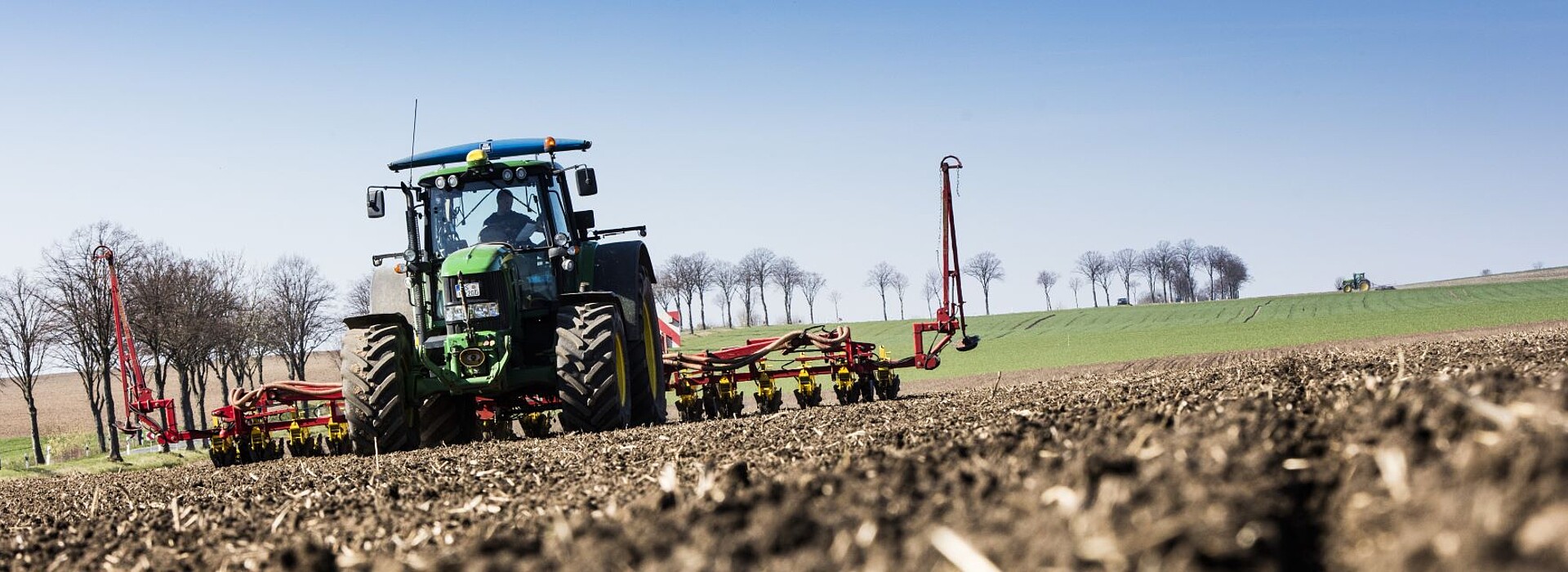Beet rust
Beet rust is a fungal disease. It is caused by the pathogen Uromyces betae. Beet rust is rarely seen in sugar beet in Germany. As a rule, it then appears from early autumn. Sometimes there is an early infestation in July. Its special weather requirements limit or promote its appearance and spread greatly. This can lead to noticeable "rusty years" in beet cultivation.
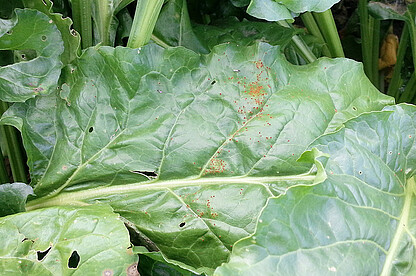
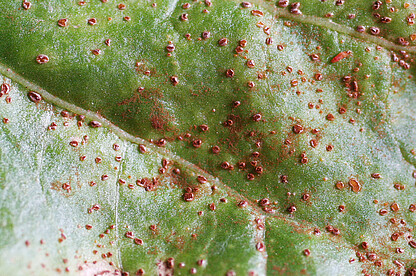
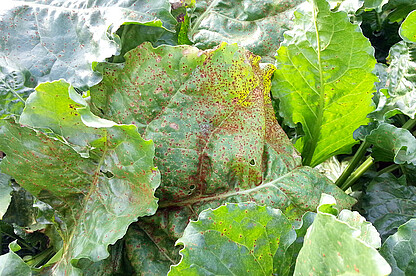
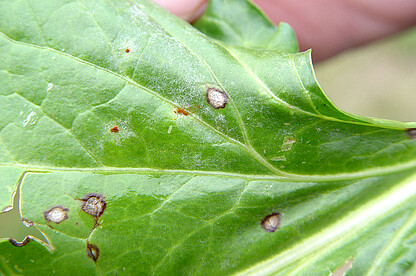
The fungus survives with the help of "winter spores" on leaf debris, which are in the soil from the last year. In spring, these "winter spores" - the teleutospores - germinate and create basidiospores that infect the beet plants. There is no change of host. Also spore beds (aecidia) can form on the underside of the leaves. The aecidiospores produced in it germinate and produce the clearly visible rust-red pustules on the beet leaves. Here the uredospores "summer spores" are produced. When the pustules burst, the spores emerge like red- rust dust. High humidity and temperatures between 10 and 22 ° Celsius are ideal for their development. Higher temperatures are counterproductive. In autumn the darker teleutospores "winter spores" are produced from the uredospores and the cycle continues.
Rust spots are relatively often found in beets in autumn, mostly mixed with powdery mildew or ramularia. The harmful effect is then usually negligible. The spores are spread by the wind, but rainfall also spreads the disease in the population.

